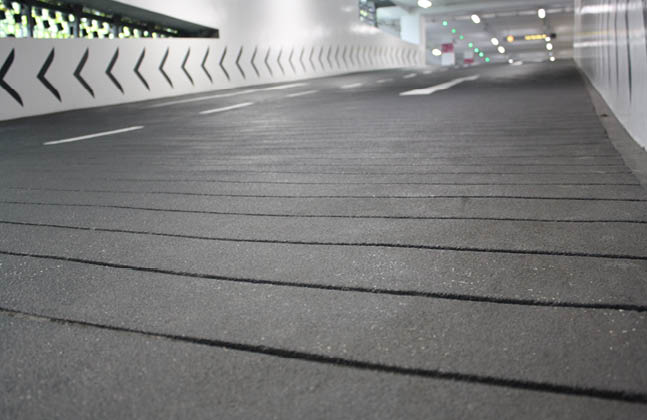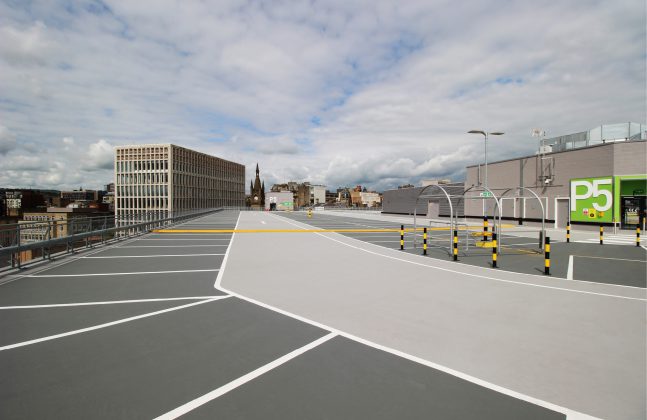There are many things that Autumn brings. A slight chill, falling leaves, darker nights, and most commonly for the UK, rain. Whilst good for the garden, excess moisture can cause all manner of problems for our floors, both inside and out!
Luckily, there are several ways that we can stop our floors and ourselves from suffering.
It’s Raining Membranes
One of the most exposed areas to rain is car park facilities, and more specifically top decks which have no cover from the elements. To fully protect a deck coating and its underlying structure it’s important to stop moisture in the concrete rising up into the floor while simultaneously guarding against liquids seeping into the very same underlying concrete.

Car park top decks are at risk of excess moisture
Luckily, there are certain membranes in the market that are designed specifically for car park top decks, including those made from a methyl methacrylate formulation that cure rapidly and are less affected by cold temperatures or high moisture levels during the application process.
At the other end of the spectrum, excessive moisture in the concrete slab can lead to significant damage for the floor, including adhesion failure and unsightly bubbles.

Moisture damage in flooring
Bubbles occur when moisture struggles to escape when it moves out of the substrate, and so ends up forcing its way into the coating.
Applying a suitable primer can stop moisture lurking in the concrete from ruining a car park’s coating. This is achieved with a primer that is designed to prevent residual moisture diffusing out of the slab and into the other parts of the floor.
Primer with an MMA formulation can quickly create a tough layer that can resist moisture movement, helping to protect the floor and substrate from failure!
The Slippery Slope
More often than not, moisture on the floor’s surface is just as dangerous as moisture on the substrate, as this can easily result in users slipping over, running the risk of serious injury.

Water on a floor’s surface can lead to slips and serious injury
Keeping pedestrians safe should be at the top of the priority list for any facility, especially as injury can also lead to litigation. One way that the risk of slipping can be reduced is to specify a positive profile on the floor’s surface.
Texture increases grip and adds slip resistance to the floor coating. This is especially important on areas such as tight turning areas and ramps.

Ramps often have a textured surface as well as grooves
In fact, ramps are often installed with a positively textured finish as well as grooves to further enhance traction. You may have also read our blog post on Machine WashWorx, and seen how they had utilised a suede additive on the ramps in their luxury car washing facility in order to aid slip resistance.

Suede additive was used to increase the slip resistance on this ramp
Many other coatings opt for sand, however on areas such as ramps and turning circles this can wear away much too quickly. Specialist car park deck solutions often utilise aggregates made from aluminium oxide or bauxite instead of sand.

Textured surfaces increase slip resistance
Such materials are much hardier and when broadcast into a thick, durable polyurethane system creates a strong, textured and reliable finish.
The versatility of polyurethane coatings means that the size and amount of aggregate broadcast into it can easily be adapted. This means that the same system can be specified for all areas of a car park facility, with the contractor able to quickly make appropriate changes for those areas that need a courser and stronger build-up.
If moisture is an issue in your facility, make sure that you have the correct deck coating solutions from the get go by speaking to flooring experts now!





